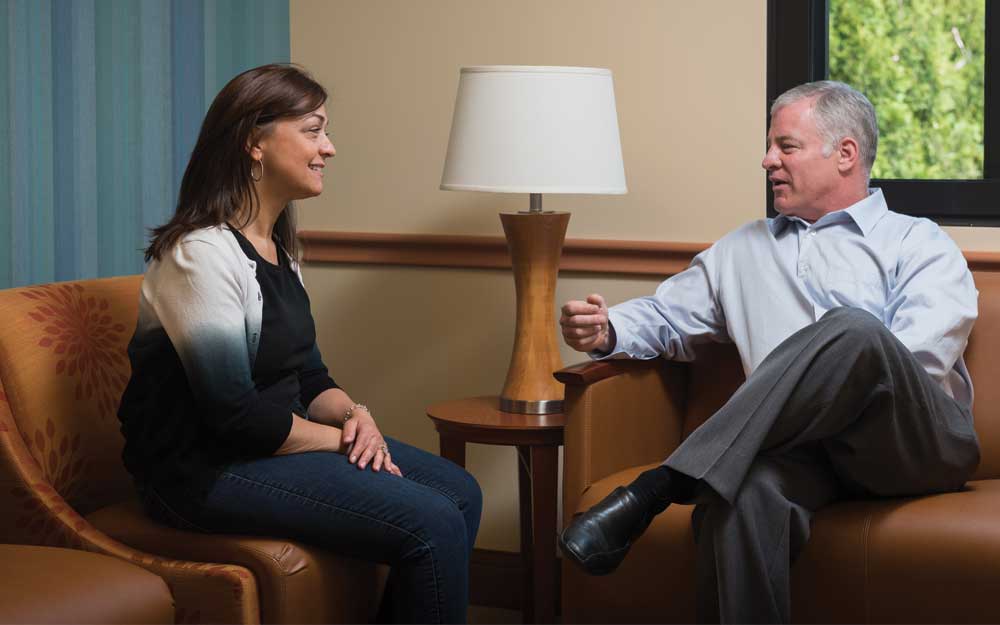If you have posttraumatic stress disorder (PTSD), just thinking about the event that’s changed your life and caused so much pain and anxiety is agonizing. Going out into the world to face real-life scenarios related to your trauma probably seems even more unbearable.
“When someone has PTSD, their life becomes smaller and more limited because they avoid people and situations that stir up memories about their trauma,” says Tracey Lichner, PhD, LP, clinical director of Rogers Behavioral Health–Minneapolis.
The problem with avoidance is as the disorder progresses, you may feel you can no longer go to work, go out with family and friends or leave home at all. “Avoidance makes it harder to overcome PTSD symptoms because a person never has the chance to learn they can ride out their anxiety if they are triggered,” says Dr. Lichner.
With the help of trained professionals, you can take small steps towards facing your trauma. “At Rogers, we use prolonged exposure therapy,” says Dr. Lichner. “It’s a highly researched technique proven effective and efficient in reducing symptoms in those with PTSD.” Prolonged exposure has two major components: imaginal and in vivo exposure.
Imaginal exposure
“People commonly try to push thoughts and memories about the traumatic event out of their minds, because they are so emotionally upsetting and physically activating,” says Dr. Lichner. “At a certain point in treatment, we help patients talk about the trauma, ask them to describe what happened to them in detail and process the event together.”
Over time, you’ll become less distressed about the trauma and learn you have the power to tolerate your emotions surrounding it. Imaginal exposure also helps modify any unhelpful beliefs you may have, such as the event was completely your fault or you could have prevented it somehow.
In vivo exposure
“In vivo means ‘in real life,’” says Dr. Lichner. “We use it to help patients complete exposure exercises in public places, like malls, theaters or crowded restaurants. Many people with PTSD are afraid of going out in public, but in vivo exposure helps individuals learn to tolerate anxiety. With repeated exposure, distress decreases and they realize public spaces are objectively safe.”
For example, if you were assaulted, you may begin in vivo exposure by looking at photos of people online who resemble your perpetrator, a tall male. Over time, you may practice approaching safe people in your life who are tall men.
“Prolonged exposure therapy helps people reclaim their lives and find ways to live with traumatic memories, so they can move forward,” says Dr. Lichner. Prolonged exposure therapy is available through Rogers’ partial hospital programs for PTSD in Oconomowoc, Brown Deer, West Allis and Appleton, Wisconsin, and opening in May 2017 in Eden Prairie, Minnesota.


